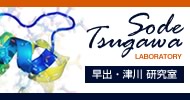Team:Tokyo-NoKoGen/Project/rhodopsin
From 2012.igem.org
- overview
- lux operon
- rhodopsin
- modelling
- Future work
- project
Sensory rhodopsin
Background
Halophilic archaea, such as Halobacterium salinarum and Natronobacterium pharaonis show phototaxis by responding to changes in light color and intensity using receptors called sensory rhodopsin I and II (SRI and SRII). The SR proteins are seven-transmembrane retinylidene photoreceptors, which transmits blue light signal (λmax 487 nm) to their corresponding transducers HtrI and HtrII respectively. signals to Htr proteins via helix-helix interaction. Htr proteins consist of two transmembrane helices and cytoplasmic methyl-accepting and His-Kinase domains, and belongs to histidine kinase / phosphoreregulator two-component system for regulating cells’ flagellar motors for phototaxis.
 "
"





